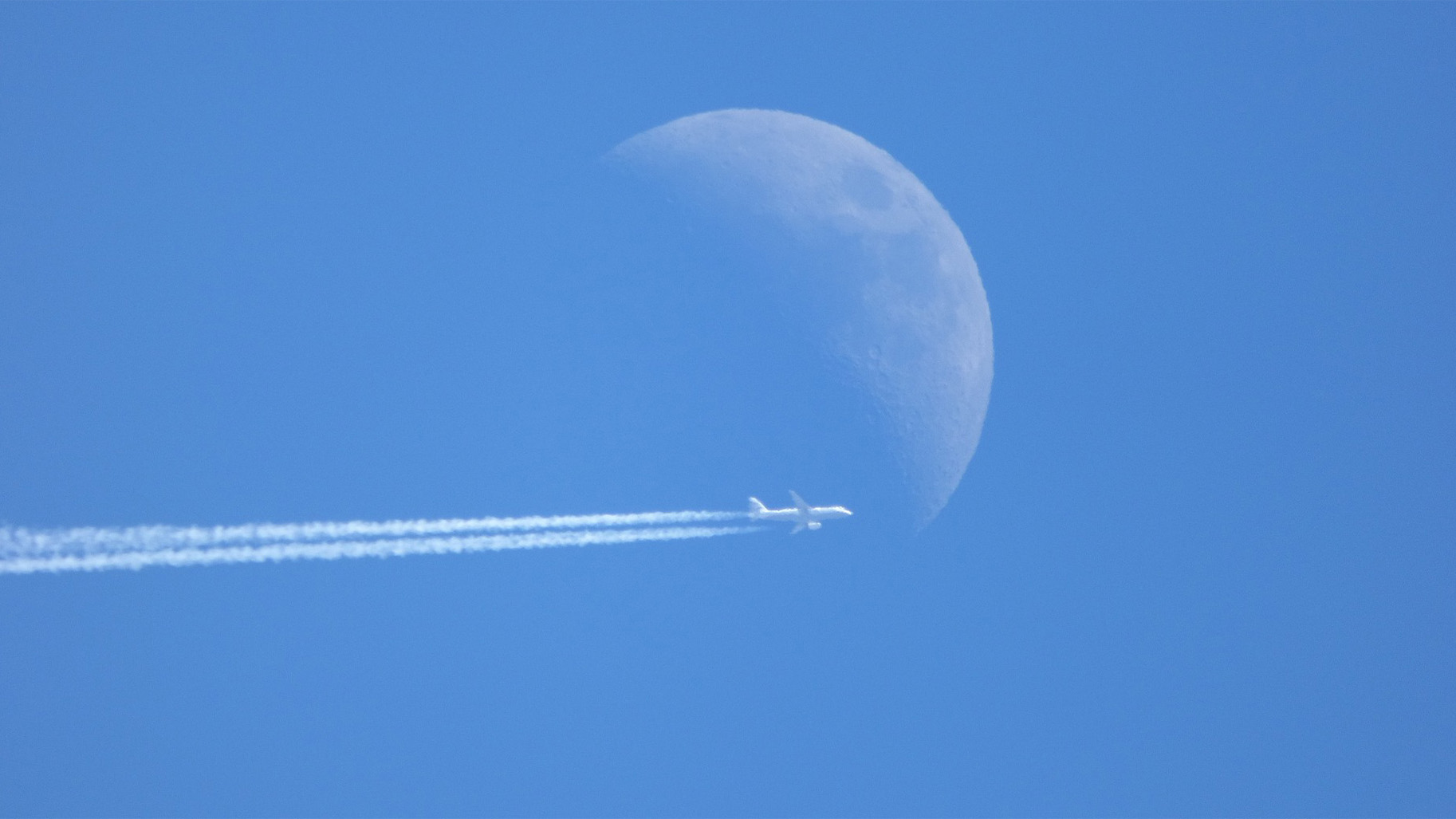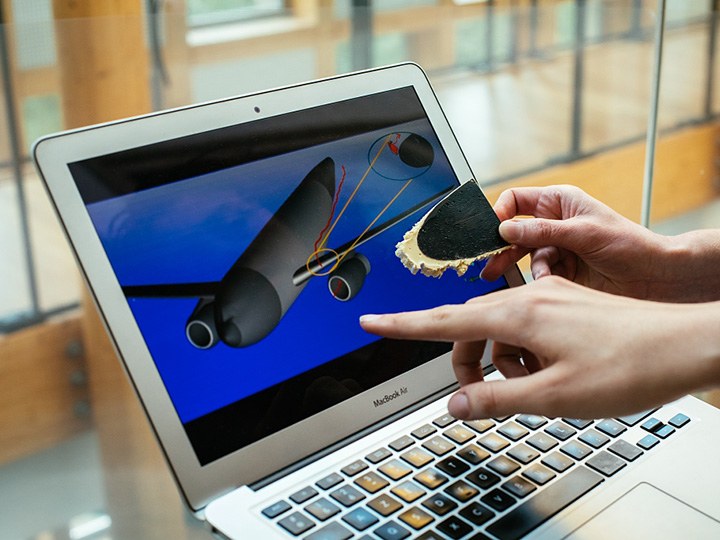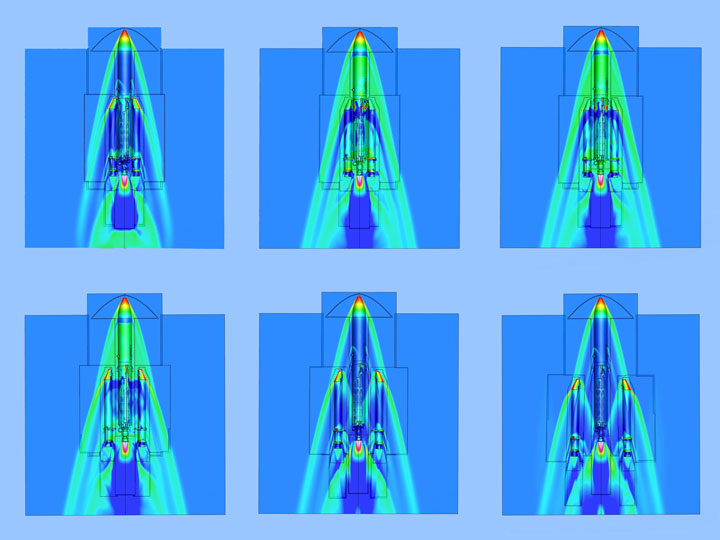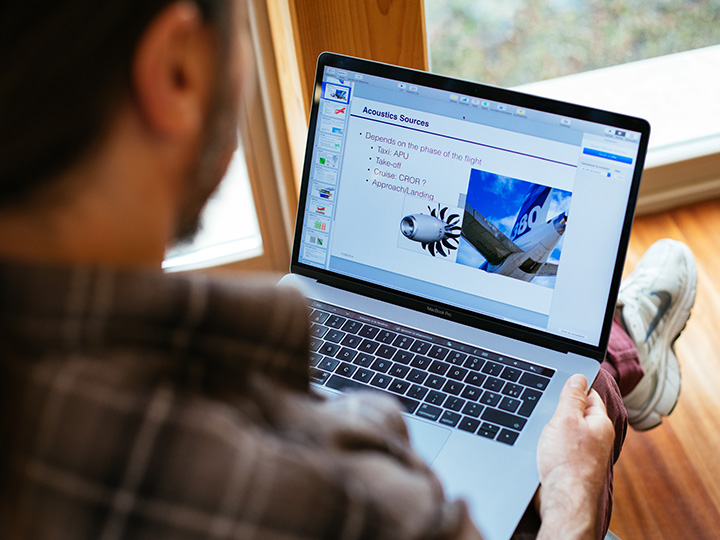
These two sectors, which have a strong presence in New Aquitaine and Occitania, also have significant social and economic implications. A whole ecosystem, operated by Aerospace Valley, Europe's leading competitiveness cluster, is involved in the study, design, manufacture and marketing of these technologies. Against this backdrop, the teams at the Inria centre at the university of Bordeaux are offering their industrial and academic partners the tools and knowledge they need to enhance the safety, competitiveness and decarbonisation of these systems, drawing on their expertise in areas such as modelling, simulation and cryptography.
The design of aeronautical systems: a scientific challenge for each component
It is vital to develop products (aircraft, UAVs, satellite launchers) that are as efficient as possible, both in terms of the service provided and the optimisation of the resources used.
Through modelling and simulation, Inria contributes to the creation of accurate and realistic models to better understand and improve aeronautical, space and defence systems. These models help to assess performance, anticipate potential problems and optimise the design of aeronautical objects at lower cost. This may involve creating mathematical representations of physical phenomena occurring in flight. For example, the Cardamom project team specialises in developing robust numerical schemes to simulate airflow around wings. This requires precise mathematical models to represent these complex interactions and provide a better understanding of aerodynamic phenomena such as turbulence[1] and icing[2] (ice formation on the wings).
Similarly, the Cagire team is focusing on the study of airflow to ensure, for example, that turbines are cooled by jet impact. "We are developing mathematical models to better understand and assess heat exchange within a turbine. Thanks to the accuracy of our models, manufacturers can carry out simulations of the interactions between the fluid and the mechanical parts, which helps to improve engine reliability while speeding up the design process at a lower cost", explains Remi Manceau, head of the project team.
Improving aeronautical and aerospace systems to reduce their impact
At a time when the conquest of space has become an issue of global sovereignty, particularly with the arrival on the market of SpaceX and its reusable rockets, European countries are now looking at ways of reducing costs, in particular by manufacturing mini and micro launchers that can be re-used, a challenge in which the digital sciences are playing a part. During a rocket launch, atmospheric re-entry is a critical phase for space vehicles, as is the separation and release of the boosters from the rocket body. One of the challenges taken up by the Storm and Topal project teams is to improve the efficiency of numerical simulations to model these complex phenomena - such as blast waves - during the lift-off phase. Using the FLUSEPA code developed by ArianeGroup, the scientists are using parallelisation and calculation optimisation techniques to produce more efficient simulations."These phenomena have very different physical timescales and the numerical methods have to introduce variable time steps depending on the geometric location of the cells in the object mesh. This complicates the balanced distribution of calculations on the supercomputers: new mesh partitioning strategies have therefore been developed, making it possible to generate a balanced task graph for the StarPU execution support", explains Alice Lasserre [3] from the Storm team.
For its part, the Concace project team is focusing on aeroacoustic problems such as the noise generated by the flow of air from the engine, propagating around the aircraft and reverberating on the fuselage but also at ground level, to the great displeasure of airport residents. Working in close partnership with Airbus and Cerfacs, the scientists carry out complex digital simulations using high-performance computing to test numerous configurations in a short space of time, thereby modelling realistic and accurate scenarios to optimise aircraft design and reduce their noise impact. "In order to design and optimise new acoustic absorption materials or new aerodynamic configurations, we need to be able to simulate the propagation of wave acoustics in a complex flow. The intensive computing methods developed by the team enable large-scale partial differential equations to be solved, taking into account the interactions between turbulence and solid structures", explains Guillaume Sylvand, Expert Engineer at Airbus.
Verbatim
Solving these problems requires considerable computing power, which is achievable thanks to HPC and the development of parallel algorithms and advanced numerical methods. At Concace, we are interested in developing composable methods so that it is then possible and easy to generate the algorithmic configuration according to the constraints of the size of the problem, the type and size of the computer, the expected accuracy of the solution or other specificities.
Inria researcher in the Concace project team
Challenges for the future of greener, safer aeronautics
In response to the urgent need to tackle climate change, the aeronautics industry needs to work on decarbonising its systems, without compromising performance or safety. To achieve this, it is necessary to develop new innovations in the design of aircraft with zero greenhouse gas emissions. For example, liquid hydrogen aircraft. The implementation of models or digital twins of complex systems is an essential component of this. This is one of the objectives of the PROVE chair "Hybrid physical models for green aeronautical propulsion", supported by the Nouvelle-Aquitaine region and held by Denis Sipp, research director at Onera, and Angelo Iollo, head of the Memphis project team, with the participation of his team and the Cardamom team. Its aim is to develop breakthrough mathematical methodologies that combine physical models and data to produce fast, accurate and scalable models based on three themes: controlling uncertainty, model reduction and data assimilation. As Angelo Iollo, head of Memphis, explains: "The introduction of digital twins will make it possible to support the development of aeronautical systems from the preliminary design stage through to operation and withdrawal of the machine before failure. Ultimately, it will also reduce certification costs through less recourse to experimentation thanks to digital simulations, and provide assistance in monitoring and maintaining systems, which will also reduce maintenance costs and design margins".
Another point will be crucial in the future for the aeronautics and aerospace sectors: the security of communications through encryption in anticipation of the development of future quantum computers. "Particularly when it comes to observing conflict zones, for example, the remote control of aircraft and the protection of sensitive data collected need to be secured against cyber-attacks and interception. At Canari in particular, we are investing in this area by developing advanced post-quantum cryptography techniques that will provide the basis for next-generation cryptographic systems," underlines Damien Robert, head of the Canari project team.
So many current or future innovations made possible by digital technology, and which will see other applications such as pilotless aircraft... but that's another story!
[1] : When mathematics reveals the turbulent origins of stars, Inria, 2021
[2] : Surface Roughness in RANS Applied to Aircraft Ice Accretion Simulation: A Review, Fluids, DOI : 10.3390/fluids8100278
[3] : Multi-Criteria Mesh Partitioning for an Explicit Temporal Adaptive Task-Distributed Finite-Volume Solver, 2024


